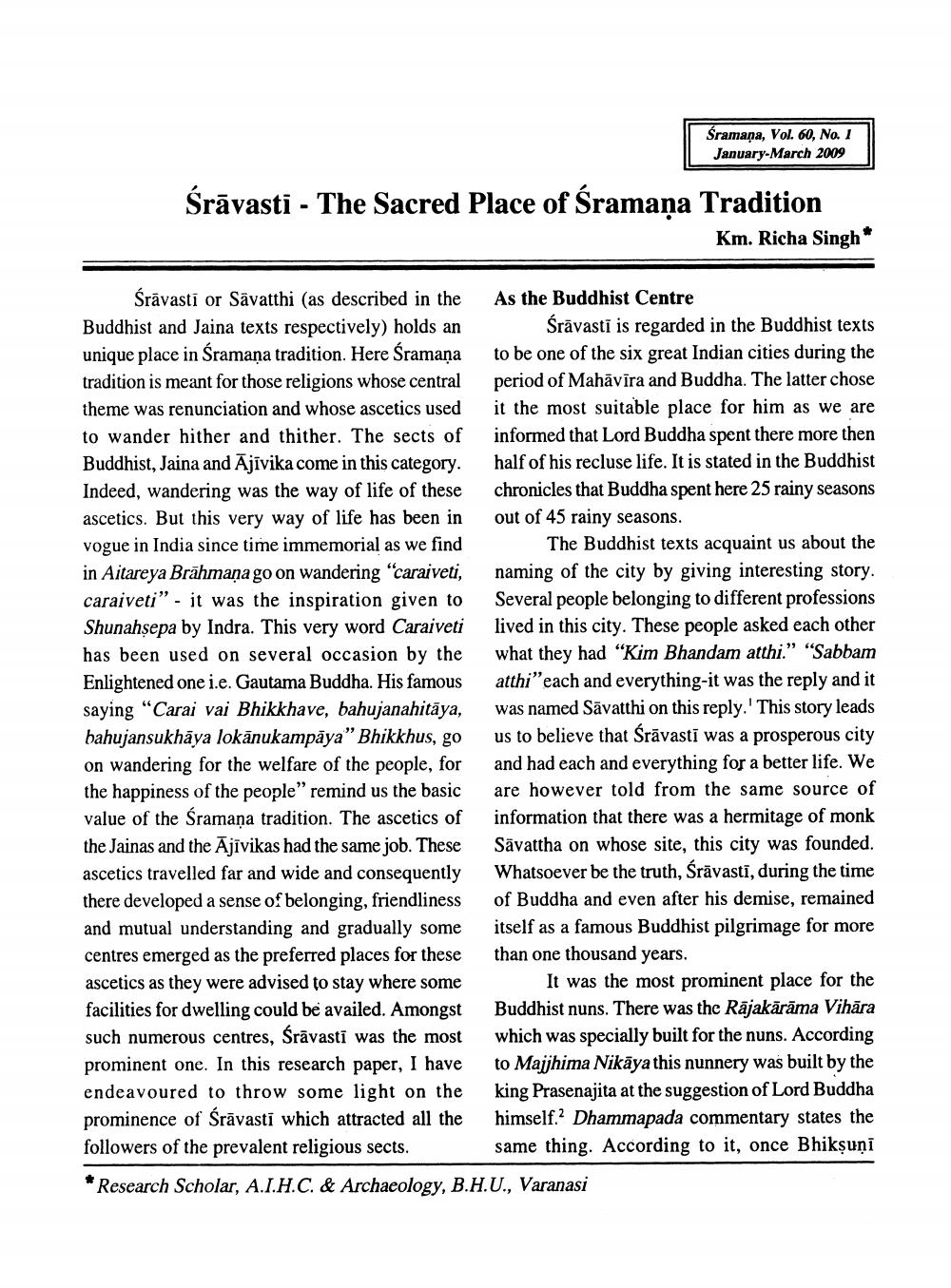________________
Śramana, Vol. 60, No. 1 January-March 2009
Śrāvasti - The Sacred Place of Śramana Tradition
Km. Richa Singh'
Śrāvasti or Sāvatthi (as described in the Buddhist and Jaina texts respectively) holds an unique place in Sramana tradition. Here Śramana tradition is meant for those religions whose central theme was renunciation and whose ascetics used to wander hither and thither. The sects of Buddhist, Jaina and Ajivika come in this category. Indeed, wandering was the way of life of these ascetics. But this very way of life has been in vogue in India since time immemorial as we find in Aitareya Brahmana go on wandering "caraiveti, caraiveti" it was the inspiration given to Shunahsepa by Indra. This very word Caraiveti has been used on several occasion by the Enlightened one i.e. Gautama Buddha. His famous saying "Carai vai Bhikkhave, bahujanahitaya, bahujansukhāya lokānukampāya" Bhikkhus, go on wandering for the welfare of the people, for the happiness of the people" remind us the basic value of the Śramana tradition. The ascetics of the Jainas and the Ajivikas had the same job. These ascetics travelled far and wide and consequently there developed a sense of belonging, friendliness and mutual understanding and gradually some centres emerged as the preferred places for these ascetics as they were advised to stay where some facilities for dwelling could be availed. Amongst such numerous centres, Śrāvasti was the most prominent one. In this research paper, I have endeavoured to throw some light on the prominence of Śrävasti which attracted all the followers of the prevalent religious sects.
Research Scholar, A.I.H.C. & Archaeology, B.H.U., Varanasi
As the Buddhist Centre
Śrāvasti is regarded in the Buddhist texts to be one of the six great Indian cities during the period of Mahavira and Buddha. The latter chose it the most suitable place for him as we are informed that Lord Buddha spent there more then half of his recluse life. It is stated in the Buddhist chronicles that Buddha spent here 25 rainy seasons out of 45 rainy seasons.
The Buddhist texts acquaint us about the naming of the city by giving interesting story. Several people belonging to different professions lived in this city. These people asked each other what they had "Kim Bhandam atthi." "Sabbam atthi" each and everything-it was the reply and it was named Savatthi on this reply.' This story leads us to believe that Śrävasti was a prosperous city and had each and everything for a better life. We are however told from the same source of information that there was a hermitage of monk Săvattha on whose site, this city was founded. Whatsoever be the truth, Śrävasti, during the time of Buddha and even after his demise, remained itself as a famous Buddhist pilgrimage for more than one thousand years.
It was the most prominent place for the Buddhist nuns. There was the Rajakäräma Vihāra which was specially built for the nuns. According to Majjhima Nikaya this nunnery was built by the king Prasenajita at the suggestion of Lord Buddha himself. Dhammapada commentary states the same thing. According to it, once Bhiksuni




